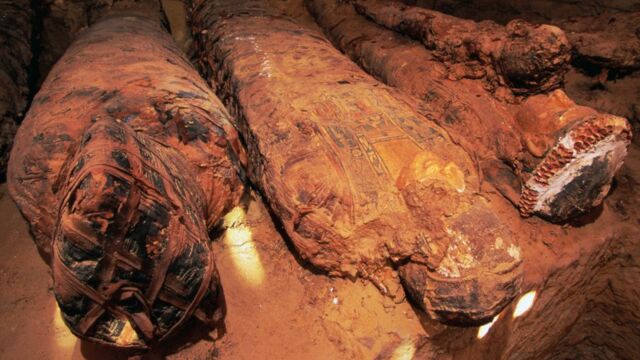World's first mummified pregnant woman had unusual markings that showed signs of cancer

In a first of its kind, an ancient mummified pregnant woman has been revealed by scientists. Her cause of death has also been determined.
Ancient Egypt is a fascinating part of our world history. From building pyramids to their tradition of mummifying their dead. This mummy was first discovered in the early 19th century, but when they examined the corpse in 2016, they were surprised by what they discovered.
Discover our latest podcast
A mummified pregnant woman
As reported by The Smithsonian magazine, the University of Warsaw came to have an Egyptian mummy encased in a coffin in their hands. On the coffin, it said that it belonged to a priest named Hor-Djehuty. However, it wasn’t until 2016, almost 200 years later that they realised that it wasn’t the corpse of a man in the coffin.
More under this adMore under this adIndeed in 2016, researchers ran an x-ray on the mummy and discovered that the corpse was actually one of a woman. What made the discovery even more surprising was that images of the mummy’s pelvic area showed a ‘tiny foot’. According to Monika Scislowska for the Associated Press (AP), this is a telltale sign of pregnancy.
The only known mummified pregnant woman
In the Journal of Archaeological Science, the team of researchers explain that this mummified pregnant woman is:
The only known case of an embalmed pregnant individual.More under this adMore under this ad
The 1st mummy studied by the Warsaw Mummy Project is the only one to be believed to have been mummified pregnant.
— Αθηνά Πετροπούλου (@ath_petr) January 11, 2022
…further research may show that a fetus in a mummified body is more common than we think… pic.twitter.com/fiYlzRwAdU
But how did she die?
The DailyMail reports that the woman was 28 weeks pregnant and that researchers have been able to determine her cause of death.
More under this adMore under this adWhen the researchers examined the mummy’s skull, they noticed some unusual ‘markings’ in the bone thanks to the scan. Indeed it seemed to coincide with the symptoms of nasopharyngeal cancer.
Nasopharyngeal cancer affects the part of the throat that connects the back of the nose to the mouth.
Professor Rafał Stec from the Medical University of Warsaw's Department of Oncology, who worked with experts at the Warsaw Mummy Project (WMP) said:
More under this adMore under this adWe have unusual changes in the nasopharyngeal bones, which, according to the mummy experts, are not typical of the mummification process,
Adding:
Secondly, the opinions of radiologists based on computed tomography indicate the possibility of tumour changes in the bones.More under this adMore under this ad
Read more:
⋙ Perfectly preserved ancient wooden sculpture discovered in Peru
⋙ Archaeologist uncover never-seen-before head of ancient Greek god in a shipwreck